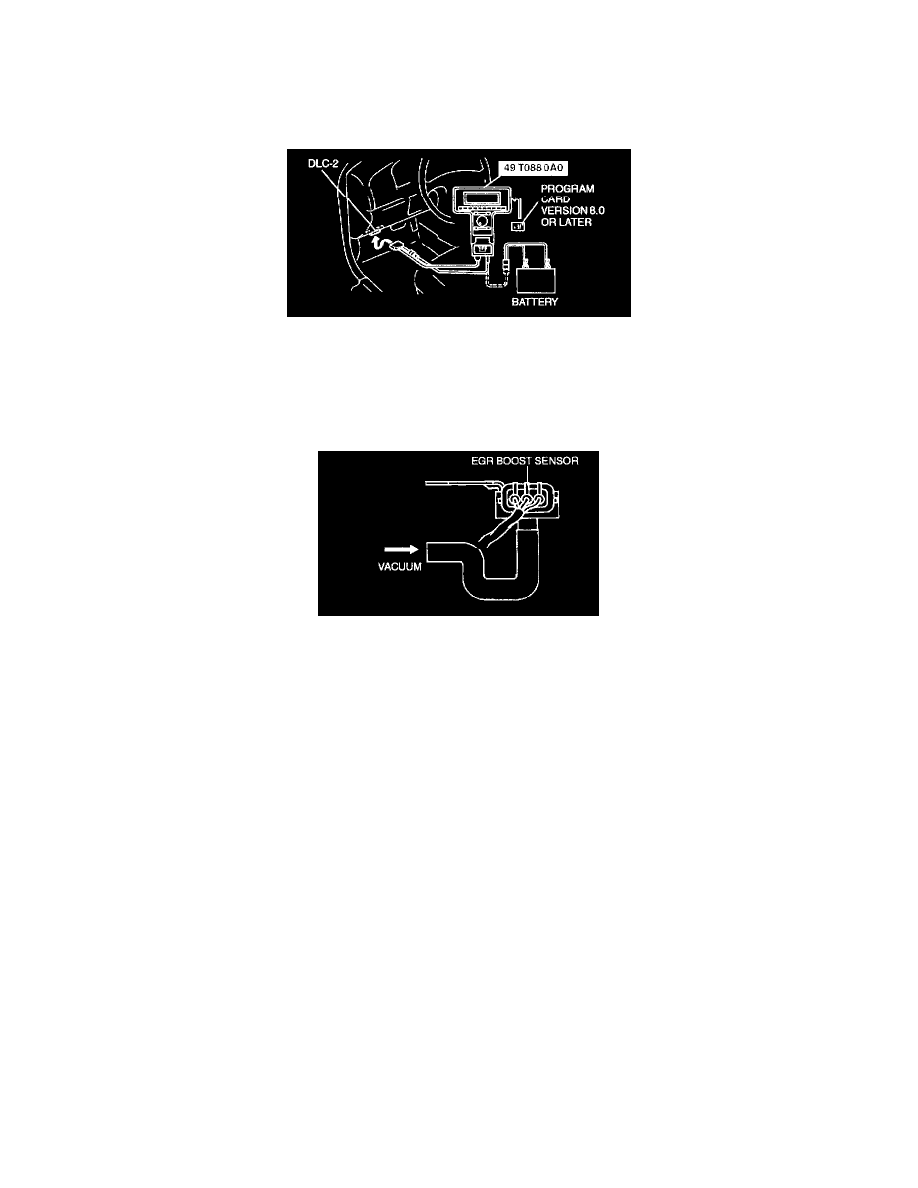Protege DX L4-1.6L DOHC (2000)

EGR Boost Sensor: Testing and Inspection
Using the Ssts (NGS Tester)
NOTE:
-
Perform the following test only when directed.
-
The following vacuum values are indicated by relative pressure from barometric pressure.
1. Connect the SSTs (NGS tester) to the DLC-2.
2. Select the "PID/DATA MONITOR AND RECORD" function on the NGS tester display and press TRIGGER.
3. Select "BARO V" on the NGS tester display and press START. The NGS tester measures and shows the voltage.
4. Turn the ignition switch on.
CAUTION: Do not apply a vacuum outside the specified limits. Doing so will damage the fuel tank pressure sensor.
5. Disconnect the vacuum hose between the EGR boost sensor and intake manifold.
NOTE: The output voltage varies with the measuring condition.
6. Verify that the voltage at BARO V is within specification.
Measuring condition:
Input voltage: 4.5 - 5.5 V
Outside temperature: 10 - 50 °C {50 - 122 °F}
Sea level: -200 - 3,000 m {-656 - 9,840 ft}
Specification:
BARO V variation: 2.3 - 4.7 V
7. Then apply the vacuum of -26.6 kPa {-200 mmHg, -7.85 inHg} to EGR boost sensor and verify that BARO V from Step 6 is within specification.
-
If not as specified, replace the EGR boost sensor.
-
If EGR boost sensor is okay, but PID value is out of specification, carry out the "Circuit Open/Short Inspection".
Specification:
BARO V variation: 0.8 - 1.3 V
Circuit Open/Short inspection
1. Remove the PCM.
